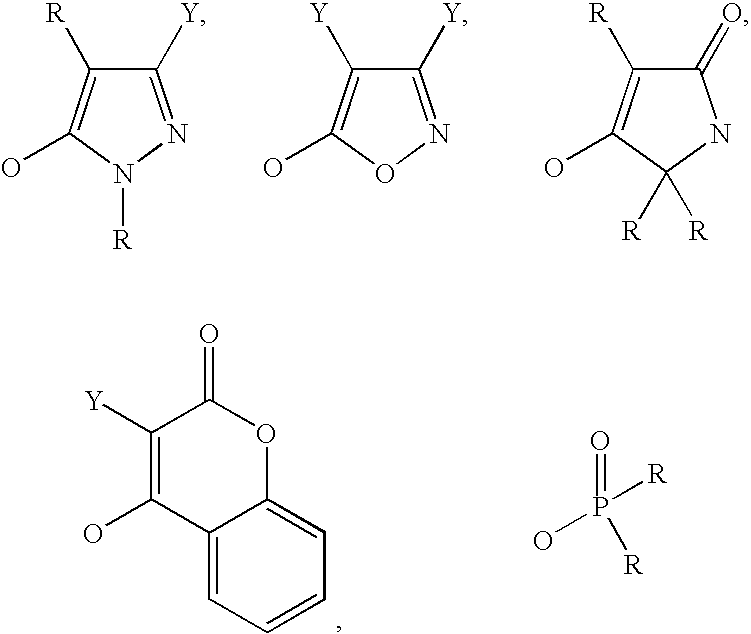Isoxazoline derivative and a process for the preparation thereof
a technology of isoxazoline and derivative, applied in the field of isoxazoline derivative, can solve the problems of inability to use as therapeutics, inability to fully understand the mechanism, and high overall mortality in most series
- Summary
- Abstract
- Description
- Claims
- Application Information
AI Technical Summary
Benefits of technology
Problems solved by technology
Method used
Image
Examples
example 1
Synthesis of N-t-Butoxycarbonyl-(S)-valinal and N-t-Butoxy-carbonyl-(S)-valinal Oxime
To a solution of dimethyl sulfoxide (11.7 mL, 3.0 eq) in dry CH.sub.2 Cl.sub.2 (.about.200 mL) under N.sub.2 at -60.degree. C. was added slowly oxalyl chloride (5.78 mL, 1.2 eq). After 10 min., a solution of N-t-butoxycarbonyl-(S)-valinol (11.23 g, 55.2 mmol) in CH.sub.2 Cl.sub.2 (30 mL) was added slowly, and the flask was rinsed with 20 mL of CH.sub.2 Cl.sub.2. The resulting white suspension was stirred for 1 h at .about.-50.degree. C. The reaction solution was treated with diisopropylethylamine (28.8 mL. 3.0 eq) and stirred for about 20 min. at -23.degree. C. then diluted with hexanes (400 mL). The mixture was washed with water(150 mL), 1N-KHSO.sub.4 solution (.times.3, total 1 L), dried with anhydrous Na.sub.2 SO.sub.4, filtered and concentrated. The yellowish liquid obtained was used directly in next step without further purification.
The crude valinal in ethanol (60 mL)-water (30 mL) at water ba...
example 2
Synthesis of (2S)-2-(t-Butoxycarbonyl)amino-1-chloro-3-methyl-butane-1-one Oxime
N-t-butoxy-carbonyl-(S)-valinal oxime (11.34 g) in DMF (100 mL) was treated with NCS (7.75 g) and stirred in warm water bath (.about.40.degree. C.) for 1 h. After removal of DMF, the residue was extracted with ethyl acetate-hexanes (1:1, 150 mL), washed with water (100 mL.times.3), dried (anh. Na.sub.2 SO.sub.4), filtered and concentrated to give 13.69 g of the title compound.
example 3
Synthesis of 4-(9-Fluorenylmethoxycarbonyl)amino-(4S)-5-hydroxy-pentanoic Acid t-Butyl Ester
To a solution of N-(9-fluorenylmethoxycarbonyl)-.gamma.-t-butyl glutamic acid (8.51 g, 20.0 mmol) and NMM (2.42 mL, 1.1 eq) in dry THF (110 mL) under N.sub.2 at 0.degree. C. was added isobutyl chloroformate (2.72 mL, 1.05 eq). After 20 min., the reaction e was filter-added to a solution of NaBH.sub.4 (1.5 g) in THF (120 mL)-MeOH (30 mL) at -78.degree. C. under N.sub.2 and rinsed with dry THF (20 mL). After stirring for 2.5 h at -78.degree. C., the reaction was quenched with acetic acid (13 mL). After concentrating to .about.50 mL, the residue was dissolved in ethyl acetate-hexanes (200 mL, 1:1), washed with water (150 mL.times.2). Aqueous layer was re-extracted with ethyl acetate-hexanes (150 mL, 1:1). Combined extract was washed with sat'd NaHCO.sub.3 (150 mL.times.2), dried (anhydrous Na.sub.2 SO.sub.4), filtered and concentrated to give 8.30 g of the title compound as glasslike solid. The ...
PUM
| Property | Measurement | Unit |
|---|---|---|
| molecular weight | aaaaa | aaaaa |
| molecular weight | aaaaa | aaaaa |
| temperature | aaaaa | aaaaa |
Abstract
Description
Claims
Application Information
 Login to View More
Login to View More - R&D
- Intellectual Property
- Life Sciences
- Materials
- Tech Scout
- Unparalleled Data Quality
- Higher Quality Content
- 60% Fewer Hallucinations
Browse by: Latest US Patents, China's latest patents, Technical Efficacy Thesaurus, Application Domain, Technology Topic, Popular Technical Reports.
© 2025 PatSnap. All rights reserved.Legal|Privacy policy|Modern Slavery Act Transparency Statement|Sitemap|About US| Contact US: help@patsnap.com



